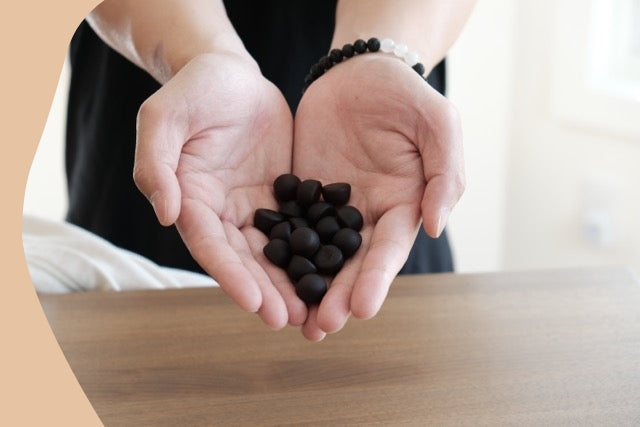
6 Ways to Get Cozy this Fall with Sustainable Fabrics
There are so many new sustainable fabric options now that we wanted to showcase some to inspire your new fall wardrobe.
Did you know they are making clothes out of soybeans, banana, cork, bamboo, and recycled plastic? We are moving out of the fast-fashion world the prime example being the recent closure and the bankruptcy of Forever21 stores in Canada.
Say Goodbye to Fast Fashion
Generation Z (or
Fast fashion meant we could get the looks of celebrities cheaply but the clothing would deteriorate after about ten washes because of its poor quality. That meant a lot of clothes ended up in the trash and the process of making the clothing wasn’t good for the environment either.
In the age of internet convenience, it’s no wonder that people are starting to turn to online shopping instead of the traditional in-store. But buyer beware, the ease of online shopping because internet mega-stores like Amazon are not earth-conscious and or conscious of the ‘big picture.’
To help you get started/continue on your sustainability journey, we’ve curated some of the most affordable and sustainable options for you to stay cozy this fall. Let’s be a part of the solution and inspire others with our choices.
To begin, let’s look at how you can vote with your dollar. Here’s a guide to which fabrics are most sustainable and some brands/companies that deserve your hard-earned cash.
Which Fabrics Are Sustainable?
Is Cotton Sustainable?
Despite what you believe, cotton is not a sustainable fabric because it requires about 700 gallons of water to make just one t-shirt among other factors of production (pesticides, insecticides, etc). Considering we only have 0.01% of all the water of the world as freshwater (which means it’s not salt-containing), it’s illogical to spend more than double of what the average family is consuming of fresh water per day (which is about 300 gallons) on one shirt.
Is Polyester Sustainable?
The short answer is no. We can categorically put petroleum-based Polyester on the ‘naughty’ list. This fabric requires 200 years to decompose and is literally destroying sea life.
Additionally, synthetic fabrics like nylon, acrylic, and polyester require fossil fuels. Nylon production releases a gas, nitrous oxide, that is 300 times more powerful at producing global warming than carbon dioxide. The most prevalent fabric material, polyester, releases plastic particles into the water on each wash and releases tons of carbon dioxide, which is the leading culprit to climate change. That means those soft fleece sweatshirts and blankets are not guilt-free.
But these plant-based fabrics are not the only fossil fuel fabric we need to stop using. Wool, leather, and cashmere actually contribute to greenhouse gases because the animals release methane which is 25 times stronger in terms of global warming than carbon dioxide. Of the 80 billion pieces of clothing consumed by humans each year, wool might just be one of the worst for our future. Sorry sweater lovers but you will have to look to something a bit less itchy and more easy to wash which is actually not all that bad right?
Are Recycled Fabrics Sustainable?
Recycled fabrics are hitting the market
The Future is Hemp
Hemp is not just a trendy fabric, it’s actually very sustainable because it requires very little water and doesn’t deplete the soil it’s grown in. Hemp even becomes softer as you wash it and it doesn’t fall apart as easily as another fabric marketed as sustainable which is bamboo. While bamboo is soft and grows quickly, it’s not as sustainable as companies may lead you to think. Hemp a better option than bamboo although bamboo requires low amounts of water to grow because
6 Ways to Get Cozy Sustainably
The task of using eco-friendly fabrics doesn’t have to be daunting. Here are some products that are better options than going to your local mall or outlet stores to stay warm this fall.
1. Eco-friendly Sweaters, Coats & Sweatshirts
If you’re looking for sustainable warmth, check out the fall line of sweaters and cozy garments by Nau. Nau has lots of information on their website about how they strive to be eco-friendly. They’ve done this by restricting their substance list and adhering to 10 sustainable fabric sources. They also have a third-party audit system to ensure they are practicing by their established code of conduct.
For another option, check out these hemp sweaters by Toad&Co that also offer reusable packaging to make the shipping more sustainable. Patagonia has been flagged as one of the most eco-friendly large winter-wear companies and they have coats for the cold weather as well as other gear. Their owner is committed to making products that have a lifetime warranty which means if it doesn’t hold up, they will repair it, replace it or refund it.
2. Eco-friendly Hats, Scarves, & Gloves
Here are some hemp gloves to keep your hands nice and cozy as well as some hemp beanies and scarves that you will be proud to rock. You could also look to Patagonia for these items because if they don’t hold up, you can at least send them in to get them repaired which is a decent investment if you ask us.
3. Buy Eco-friendly Bedding
How many blankets and sheets do you buy each year that are ecofriendly? Most of us forget to look at this part of our lives to make it ecofriendly. While it’s hard to find a bedding that is completely eco-friendly, at least organic cotton doesn’t use pesticides and insecticides that are toxic to the environment. These comforters and blankets are a blend of organic cotton and hemp which is better than a non-organic synthetic. Here are some organic sheets for the next time you need new sheets as well.
4. Check Out Online Thrifting
People are turning to online thrift stores more than ever as the upcycling trend has taken off in the world of fashion. Stores like Poshmark and thredUp are quickly expanding their market as people realize they can find sweaters for $5 and not contribute to buying more new clothing items. Companies like thredUP do all the work to sell your clothes which will give you money or credit you can use to refresh your wardrobe. You just order a cleanout kit and leave it at a USPS or FedEx location with your used clothes and they professionally photograph and list your clothes for sale for you.
5. Eco-friendly Socks & Boots
Rawganique makes a sock that is a blend of hemp and flax (which linen is made of). They also have hemp boots which we think you will love because they super cute and use biodegradable dyes.
Alternatively, you can find eco-friendly socks through Pact apparel which is a fair trade organic cotton brand.
6. Wear Layers Instead of Using The Heat
It can really help reduce our power consumption if we wear thick socks, an extra sweatshirt or blanket at home so we don’t have to crank the heat up so much. The power plant supplying your power is also contributing to global warming.
There are 1,793 natural gas power plants, 400 coal plants, and 61 nuclear plants in the US. Maryland, California, Scotland, Germany, Whales, Australia and Hawaii are among the list of those who have banned the process of extracting natural gas, called fracking, because of it’s harmful effects on the environment.
Read this next: Trash to Treasure: All About Upcycling
In Closing...
Try not to get bogged down with being perfect about your clothing and bedding choices because it can make it overwhelming given that all materials are going to have some impact somewhere. Instead, try to find the items that have a better or a more gentle impact and that will make a difference. Make your style and your own personal statement one that says that you care and inspire people to think about these choices
Before purchasing, do some digging to make sure you aren’t contributing to unfair working conditions or local health problems. Look to see who is making your clothes, how much energy it would take to get it to your doorstep, and how sustainable the fabric production is. The issue of sustainability is very complex, to say the least, but if the company is transparent and making all their practices known to the public, you can trust them more than those that aren’t talking about environmentally conscious fashion.
It can be hard to change our habits and it requires looking deep within yourself to find the motivation to take the time to make better choices. Think of the people that come after us, the children and animals, that have done nothing to deserve a planet that is polluted or uninhabitable. Consumption can shift if we all stop our addiction to turning a blind eye to the processes we can’t see that provide us with the comforts of modern living. If you thought about the intense storms raging through the Caribbean when you put on your new sweatshirt, it might help you make better decisions.
Finally, make sure you recycle your clothing instead of throwing them away. Make good choices, you got this!






